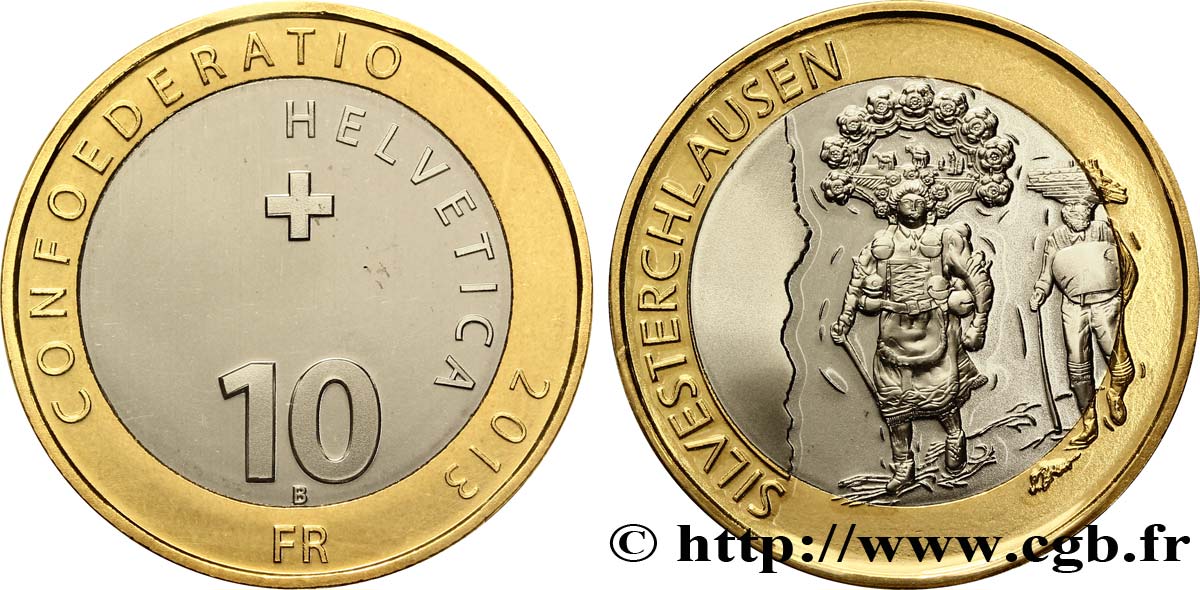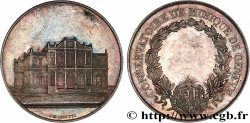E-auction 151-90072 - fwo_385732 - SCHWEIZ 10 Francs Silvesterchlausen 2013 Berne
Sie müssen angeschlossen sein und von cgb.fr genehmigt werden, um in einer E-Auktion teilzunehmen.Melden Sie sich an, um zu wetten..Die Kontobestätigungen sind innerhalb von 48 Stunden nach Ihrer Anmeldung gemacht.Warten Sie nicht bis die letzten zwei Tage vor dem Abschluss eines Verkaufs, um Ihre Registrierung abzuschließen. Klickend "BIETEN" verpflichten Sie sich vertraglich, diesen Artikel zu kaufen und Sie nehmen ohne Reserve die allgemeinen Verkaufsbedingungen für den e-auctions zu cgb.fr an.
Der Verkauf wird an der Zeit auf der Übersichtsseite angezeigt geschlossen werden. Angebote, die nach der Schließung Zeit empfangen sind, werden nicht gültig.
Bitte beachten Sie, dass die Fristen für die Einreichung Ihres Angebots auf unsere Server können variieren und es kann zur Ablehnung Ihres Angebots entstehen, wenn es in den letzten Sekunden des Verkaufs gesendet wird. Die Angebote sollen mit ganzer Zahl ausgeführt sein, Sie können Kommas oder des Punktes in Ihrem Angebot nicht erfassen. Bei Fragen klicken Sie hier, um einen Blick auf die FAQ E-Auktionen.
KEINE ANSCHAFFUNGSKOSTEN FÜR DIE KÄUFER.
KEINE ANSCHAFFUNGSKOSTEN FÜR DIE KÄUFER.
| Schätzung : | 22 € |
| Preis : | 12 € |
| Höchstgebot : | 14 € |
| Verkaufsende : | 07 März 2016 18:27:00 |
| Bieter : | 4 Bieter |
Type : 10 Francs Silvesterchlausen
Datum: 2013
Name der Münzstätte / Stadt : Berne
Prägemenge : -
Metall : zweimetallisch
Durchmesser : 33 mm
Rand séries de cannelures
Kommentare zum Erhaltungszustand:
sous étui d’origine Swissmint
N° im Nachschlagewerk :
Vorderseite
Titulatur der Vorderseite CONFEDERATIO HELVETICA / 2013 / FR.
Beschreibung Vorderseite croix et chiffre “10”.
Übersetzung der Vorderseite CONFÉDÉRATION HELVÉTIQUE.
Rückseite
Titulatur der Rückseite SILVESTERCHLAUSEN.
Beschreibung Rückseite deux Chläuse masqués et costumes.
Kommentare
Le Silvesterchlausen est la coutume hivernale la plus impressionnante que compte l'arrière-pays d'Appenzell Rhodes-Extérieures. Remontant à la nuit des temps, cette coutume est pratiquée à Herisau et dans quelques autres communes le 31 décembre. Toutefois, à Urnäsch et Waldstatt, elle est pratiquée le 13 janvier, dernier jour de l'an selon le calendrier julien. Seulement autorisé les derniers jours de l'année, le Silvesterchlausen a pour origine les chants du nouvel an et l'usage autrefois largement répandu chez les mendiants de se déguiser à la Saint Sylvestre. Aux XIXe et XXe siècles, la coutume s'est peu à peu établie. Les Chläuse se répartissent en différents groupes pour mettre en valeur les cloches et le chapeau en forme de roue de chaque participant. A mesure que la variété des costumes s'élargissait, les Chläuse ont également vu leur tenue devenir de plus en plus imposante.
A cinq ou six heures du matin, les Chläuse se préparent. Leur itinéraire débute en dehors du village, chez un agriculteur qui les a invités à déjeuner. Puis, ils vont de ferme en ferme. Devant chaque maison, ils se disposent en cercle, font retentir leurs cloches et entonnent un jodel naturel appelé Zäuerli. Finalement, ils souhaitent la bonne année à l'agriculteur et à sa famille en leur serrant la main de manière énergique et repartent vers la prochaine ferme dans l'ordre auquel ils sont arrivés.
The Silvesterchlausen is the most impressive winter custom in the hinterland of Appenzell Ausserrhoden.. Dating back to the dawn of time, this custom is practiced in Herisau and in several other municipalities on December 31st.. However, in Urnäsch and Waldstatt it is practiced on January 13, the last day of the year according to the Julian calendar.. Only allowed in the last days of the year, the Silvesterchlausen originates from New Year's carols and the once widespread custom among beggars of dressing up on New Year's Eve.. In the 19th and 20th centuries, the custom gradually became established. The Chläuse are divided into different groups to highlight the bells and wheel-shaped hat of each participant.. As the variety of costumes expanded, the Chläuse also saw their attire become increasingly imposing..
At five or six in the morning, the Chläuse get ready. Their journey begins outside the village, at the home of a farmer who has invited them for lunch.. Then they go from farm to farm. In front of each house, they form a circle, ring their bells and sing a natural yodel called Zäuerli.. Finally, they wish the farmer and his family a happy new year with a vigorous handshake and set off for the next farm in the order in which they arrived.
A cinq ou six heures du matin, les Chläuse se préparent. Leur itinéraire débute en dehors du village, chez un agriculteur qui les a invités à déjeuner. Puis, ils vont de ferme en ferme. Devant chaque maison, ils se disposent en cercle, font retentir leurs cloches et entonnent un jodel naturel appelé Zäuerli. Finalement, ils souhaitent la bonne année à l'agriculteur et à sa famille en leur serrant la main de manière énergique et repartent vers la prochaine ferme dans l'ordre auquel ils sont arrivés.
The Silvesterchlausen is the most impressive winter custom in the hinterland of Appenzell Ausserrhoden.. Dating back to the dawn of time, this custom is practiced in Herisau and in several other municipalities on December 31st.. However, in Urnäsch and Waldstatt it is practiced on January 13, the last day of the year according to the Julian calendar.. Only allowed in the last days of the year, the Silvesterchlausen originates from New Year's carols and the once widespread custom among beggars of dressing up on New Year's Eve.. In the 19th and 20th centuries, the custom gradually became established. The Chläuse are divided into different groups to highlight the bells and wheel-shaped hat of each participant.. As the variety of costumes expanded, the Chläuse also saw their attire become increasingly imposing..
At five or six in the morning, the Chläuse get ready. Their journey begins outside the village, at the home of a farmer who has invited them for lunch.. Then they go from farm to farm. In front of each house, they form a circle, ring their bells and sing a natural yodel called Zäuerli.. Finally, they wish the farmer and his family a happy new year with a vigorous handshake and set off for the next farm in the order in which they arrived.








 Berichten über einen Fehler
Berichten über einen Fehler Die Seite drucken
Die Seite drucken Teilen meiner Auswahl
Teilen meiner Auswahl Stellen Sie eine Frage
Stellen Sie eine Frage Einlieferung/Verkauf
Einlieferung/Verkauf
 Details
Details











